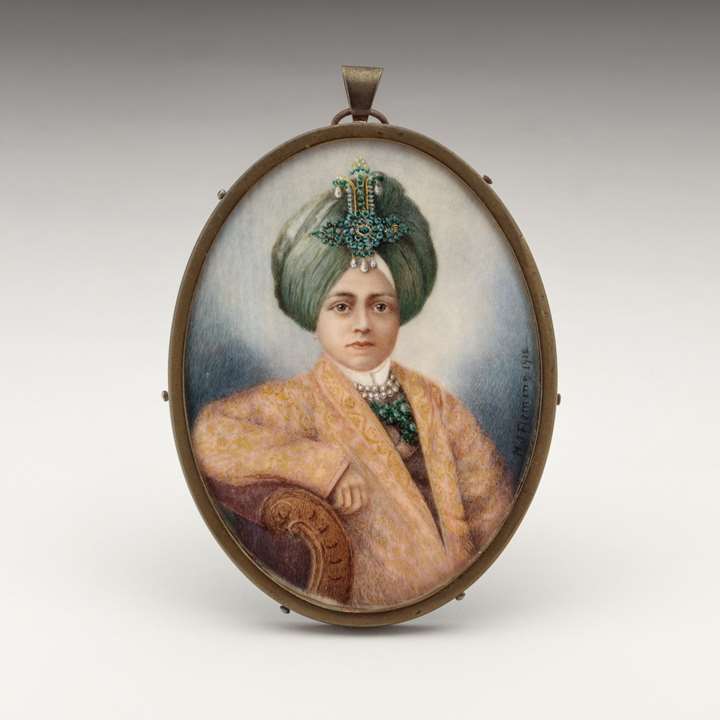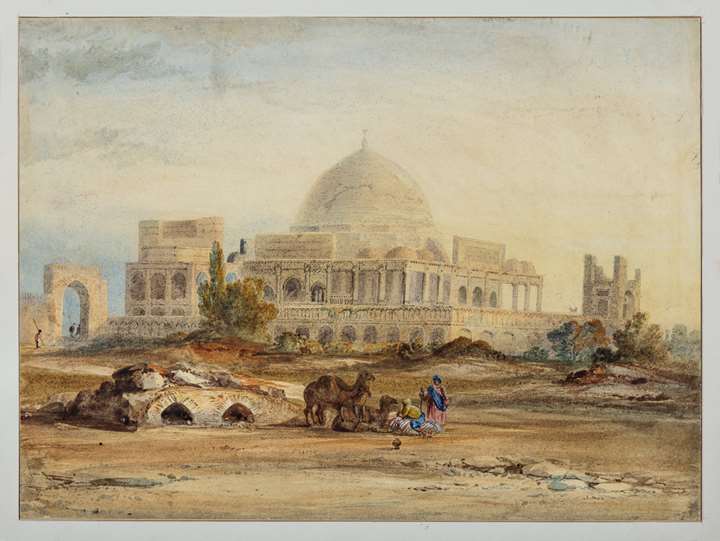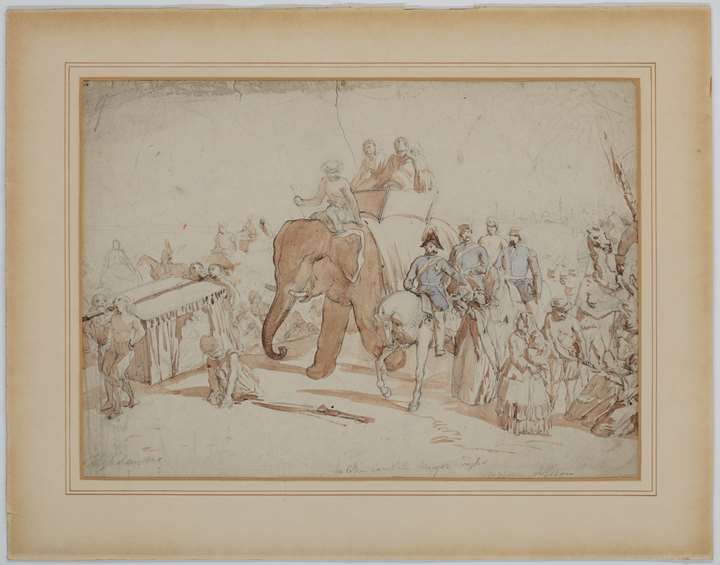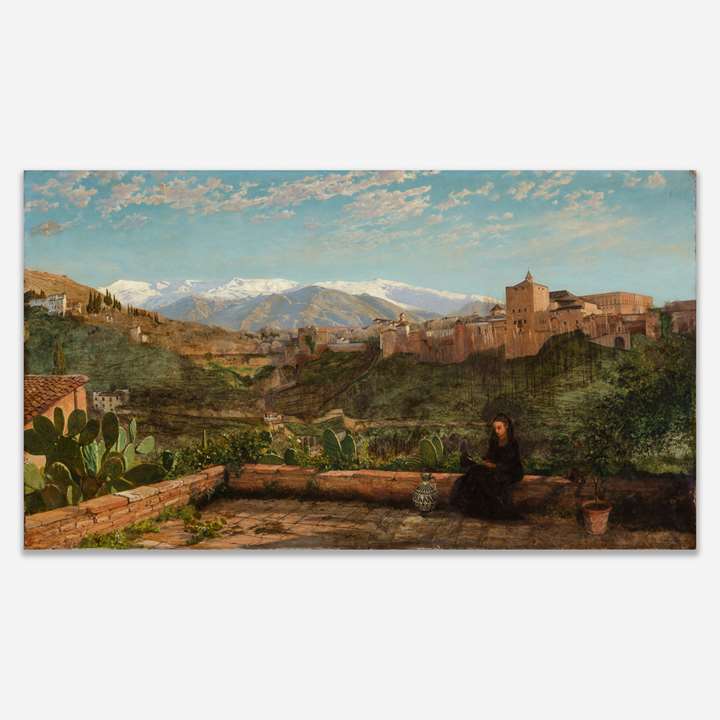Description & Technical information
This watercolour of three birds in a peach tree (Prunus persica) is almost identical to plate 14 of the ‘Zoological Large Series Drawings of Chinese Animals, Birds, Reptiles, Fish, and Insects’, published by John Reeves between 1822 and 1829 and held in the Natural History Museum.1 A tea-inspector under the employ of the East India Company in Canton, Reeves was an amateur naturalist who commissioned local Chinese artists to create botanical and zoological paintings. He commissioned multiple sets of paintings, sometimes up to four copies of a single subject.2
With their stout conical beaks revealing their membership in the Fringillidae (finch) family, two baya weavers (Ploceus philippinus) perch on branches in the left-hand side of the painting. The male, with his yellow cap and dark brown mask, is wearing breeding plumage, indicating that this watercolour was completed between May and September. The female, whose plumage stays the same perennially, has broad buff-coloured eyebrows. The larger bird on the right of the painting is a black-throated laughingthrush (Pterorhinus chinensis). As this species does not show sexual dimorphism, the artist (or John Reeves) has not deemed it necessary to depict the male and female of the species. Though at first glance the composition looks natural, as though the artist has stumbled across three birds in a tree and painted them, neither the baya weaver nor the black-throated laughingthrush is at home in the cherry tree. In fact, the two birds would be unlikely to stray into each other’s territory in the wild. The baya weaver is found in grasslands, farmland, and scrub, roosting in reedbeds. The black-throated laughingthrush is found in lowland subtropical or tropical forest. These birds may have been drawn from specimens, which could be easily arranged into such as scene, or a composite painting was created from studying live birds. Painting in the Reeves collection were certainly created from the aviary of Thomas Beale, an English merchant based in Macau.3
Unfortunately, few of the paintings in the collection have names associated with them – only four names are listed in Reeves’ notebooks: Akut, Akam, Akew, Asung.4 He trained them in European scientific convention, and imported European cartridge paper, watercolours, and pencils. The watermarks in the Reeves collection range from 1795-1831.5 This study is on Whatman paper, watermarked 1819.
1 With thanks to Rebecca Keddie at the Natural History Museum.
2 Magee, Judith. Chinese Art and the Reeves Collection. London: Natural History Museum, 2011. P. 11.
3 Datta, Ann. ‘Nineteenth-century Chinese watercolours of Paradisaea minor in the library of the Zoological Society of London’, Archives of natural history 45.2 (2018): 363-378.
4 Magee. Op. Cit. p. 11.
5 Ibid. p. 11.
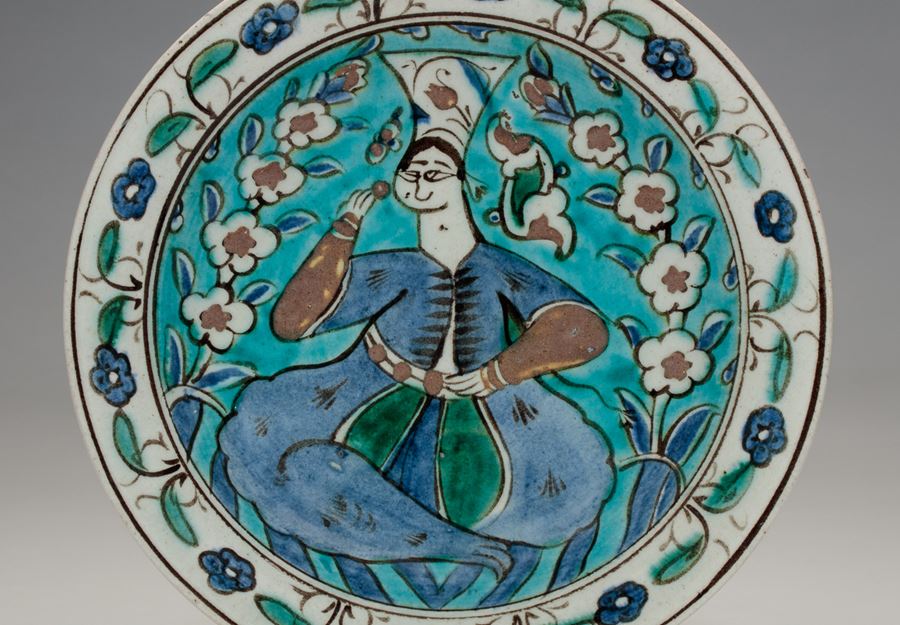
Discover the gallery
Amir Mohtashemi Ltd.
Indian,Islamic and Cross-Cultural Works of Art
More Works From This Gallery
, Life-giving Spring_T636941396279323342.jpg?width=720&height=1200&mode=max&quality=60)
Amir Mohtashemi Ltd.
Icon Painting of the Theotokos (Mother of God), Life-giving Spring
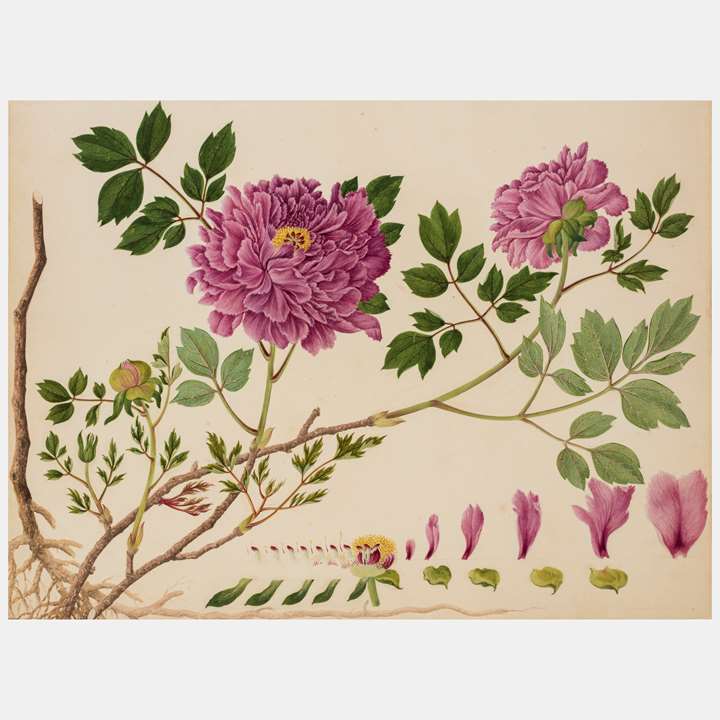
Amir Mohtashemi Ltd.
